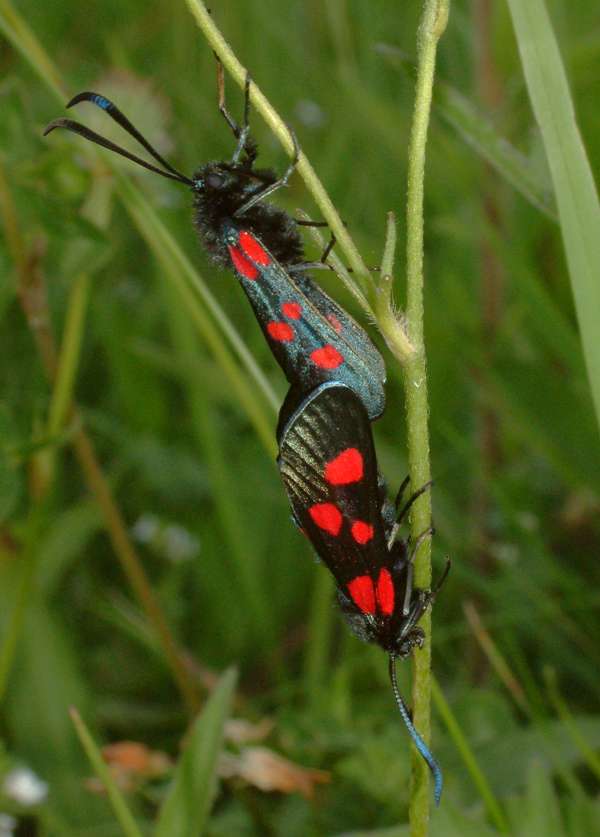Narrow-bordered Five-spot Burnet - Zygaena lonicerae
Phylum: Arthropoda - Class: Insecta - Order: Lepidoptera - Family: Zygaenidae

Several species of Burnet moths occur in the UK along with several more subspecies which makes accurate identification difficult. The common name refers to a narrow black border around the red underwing of this common day-flying moth.
The Narrow-bordered Five-spot Burnet flies from early June to the end of July, during the peak flowering time for our native wildflowers which is when the supply of nectar they feed on is most plentiful.
Their habitat is wherever there are plenty of wildflowers - meadows, roadside verges, coastal cliffs and dune systems. They are more active in bright, sunny, warm weather.
The forewing of the Narrow-bordered Five-Spot Burnet Moth ranges between 15 and 19mm.
Distribution
In Britain and Ireland this moth is both common and widespread. On mainland Europe its range extends down to northern Spain, and it extends eastwards through most of temperate Asia including parts of China.
Lifecycle
The adults lay their eggs on various species of native wildflowers, and the larvae remain visible on the stems of the plants. They pupate in transparent cocoons, also spun and positioned on plant stems.
The larval foodplants of The Narrow-bordered Five-spot Burnet Moth are Bird's-foot Trefoil, White and Red Clover, Meadow Vetchling and Sainfoin.
Acknowledgements
This page includes pictures kindly contributed by Rob Petley-Jones
Studying butterflies and moths...
Excited at the prospect of flyfishing? So are we, and we're pretty sure you would find the Winding River Mystery trilogy of action-packed thrillers gripping reading too. Dead Drift, Dead Cert, and Dead End are Pat O'Reilly's latest river-and-flyfishing based novels, and now they are available in ebook format. Full details on our website here...
Buy each book for just £4.96 on Amazon...
Please Help Us: If you have found this information interesting and useful, please consider helping to keep First Nature online by making a small donation towards the web hosting and internet costs.
Any donations over and above the essential running costs will help support the conservation work of Plantlife, the Rivers Trust and charitable botanic gardens - as do author royalties and publisher proceeds from books by Pat and Sue.
